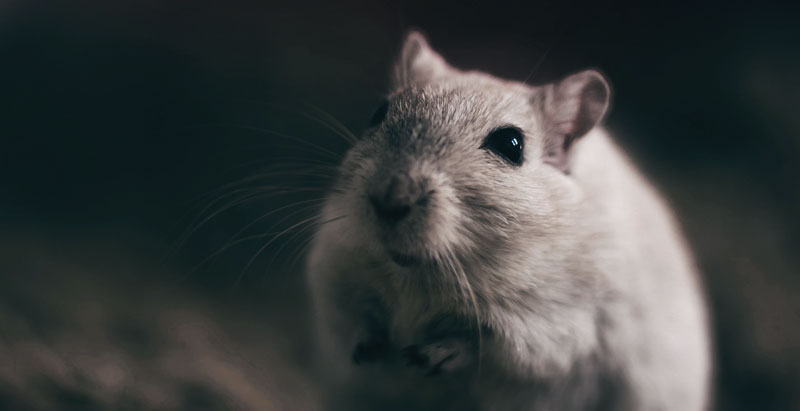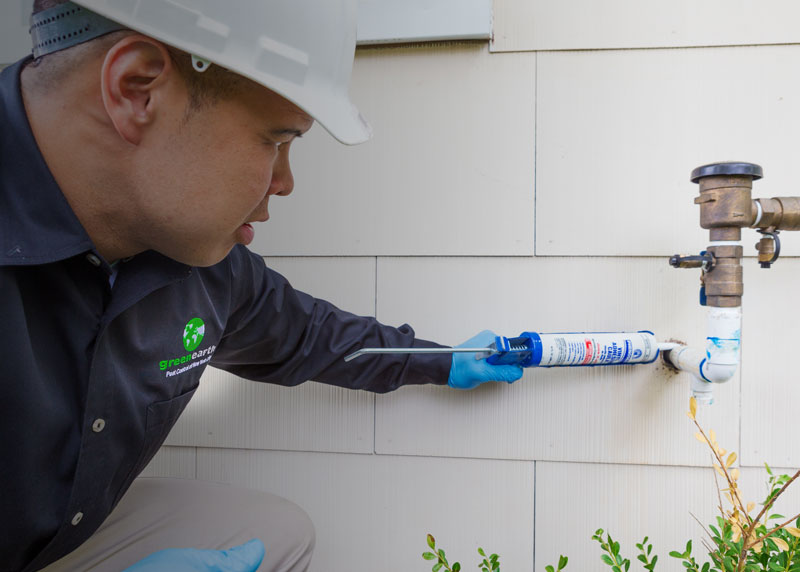
When summer comes to an end…
And temperature starts to decrease, rodents and other animals seek warmth. Below are our best do-it-yourself tips for keeping rodents such as mice and rats, as well as many other unwanted animals out of your home and what to do if your efforts have failed.
When the cold weather becomes unbearable…
We seek warmth inside of our heated homes. Likewise, so do rats, mice and other animals, such as raccoons, opossum, squirrels, etc. They say in sports that defense wins games. No matter the size of the animal trying to get into your home, your best defense is to seal off all entry points that would allow an animal as small as a mouse into your home.
 To achieve this goal, we recommend that you evaluate the exterior of your home at the end of September and the beginning of May, before the peak rodent seasons occur.
To achieve this goal, we recommend that you evaluate the exterior of your home at the end of September and the beginning of May, before the peak rodent seasons occur.
Since a baby mouse can fit through an opening as small as 1/7 of an inch (the size of an American dime coin),
you want to concentrate your efforts on every single opening that you can find. Look for light coming through openings and use your hands to feel for air drafts, you will find entry points that you may have never noticed otherwise. Their repair will not only prevent rodents entry, but help you conserve energy and help insect proof your home as well!
Your primary focus should be on windows, doors (including the garage doors), vents and along the foundation.
Special attention should be given to areas where pipes, cable, phone and electrical wires enter your home. You can use any type of exterior sealant, such as foam, caulk, silicone, weather-stripping or poly-fiber mesh to seal openings you find. If you find any gaps under your doors then consider installing a door saddle or door sweep to prevent rodents from running under the doors and into your home. For openings that cannot be sealed, such as an attic or dryer vents, consider installing heavy duty fine screens over the vents. This will allow air flow to continue, but will not allow rodent entry to your home. If you are the type that likes to leave your windows open, make sure you have screens that fit securely and that the screens do not have any holes in them. Likewise, if you have any in-window air conditioners you leave in year round, we recommend you ensure that there is a complete seal around the sleeve of the air conditioner and if not, then make one.
Seal all exterior entry points.
Keep debris far away from your home (preferably completely off your property) in addition to keeping your entire landscape neat, trim and at least 24″ from making contact with your home will aid in preventing rodents. Taking these measures will not only eliminate rodent harborage areas (places rodents like to hide and nest), they allow a clear path to inspect for rodent activity and rodent entry points that lead directly into your home regularly.
So what do you do if your efforts fail?
A rodent bothered by extreme hot or cold temperature will stop at nothing to seek safety and be comfortable. If your home winds up invaded, the very first thing you should do is identify the pest. Once you have established that you have a mouse, a rat or some sort of larger animal in your home, you can now determine whether you want to continue to perform the work on your own or call a professional who deals with these issues regularly.

From a professional point of view, if you have rats or larger animals in your home then you should always contact a professional immediately! Avoid being injured or even attacked!
Okay, back to business…
Let’s say it is a mouse in your home, a quick trip to the hardware store for some rodent glue traps or traditional spring traps to trap the mouse will do the trick. Place your traps carefully and thoughtfully in the area where you either saw the mouse, noticed their droppings or found their chew damages. Have a little bit of patience and the mouse will be trapped. As a safety precaution, we highly recommend that all mouse traps are placed in a safe and responsible manner at all times. Your placements should always be completely out of the reach of both children and pets. Some of the best places to place mouse traps are under or behind large appliances, inside of locked closets, locked cabinets, locked crawl spaces and locked attics. We know, we say locked a lot but always think safety first!

Once you have successfully trapped the mouse…
perform another evaluation of the exterior of your home immediately! Thoroughly search for any rodent entry points to seal and prevent recurring invasions. Additionally, seal all entry points on the inside of your home, such as those that will allow rodents to enter from the walls and directly into your living space. Be wary, once the interior appears to be mouse free you should still leave mouse traps in place. This additional precaution will help you in the event a mouse is trapped inside of your home after your sealing efforts and as an added security to guard against future invasions.
If small unwanted animals scampering around your beautiful house is not enough to gross you out, imagine someone in your home, such a baby or someone elderly, getting sick (or worse), because they were bit by a rodent. In case you were not aware, rodents carry diseases. Pest Control Professionals are trained to provide the most responsible rodent control approaches available.